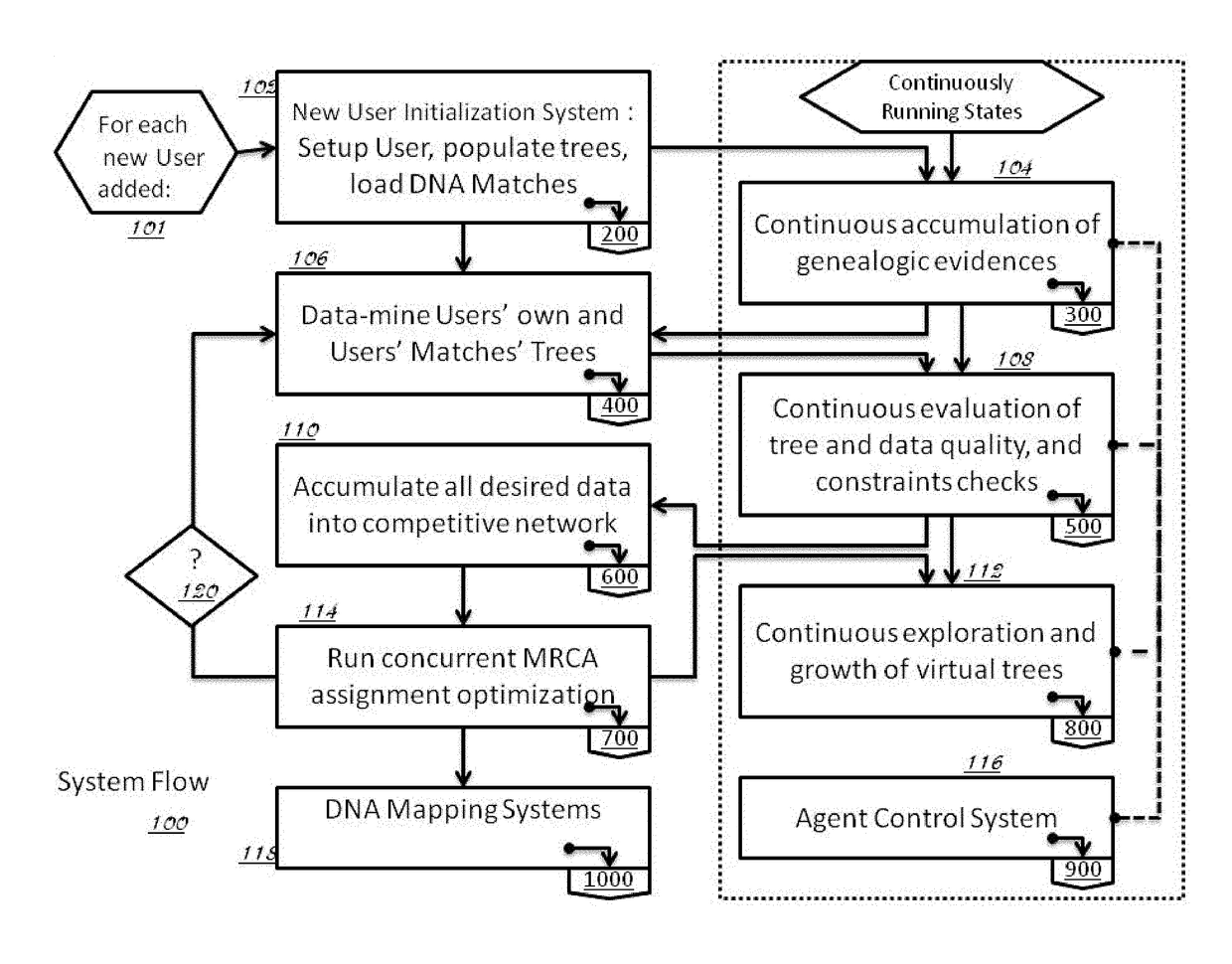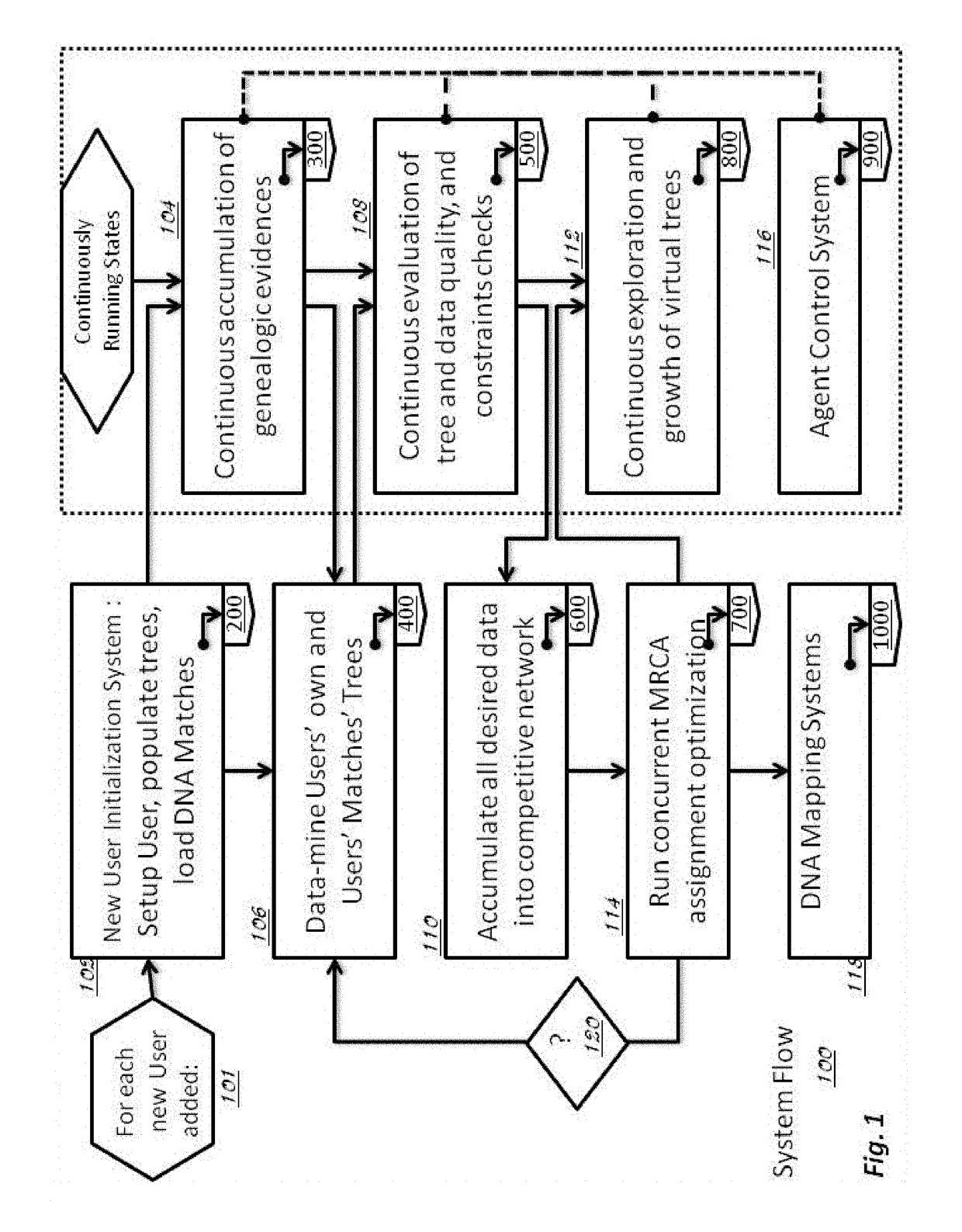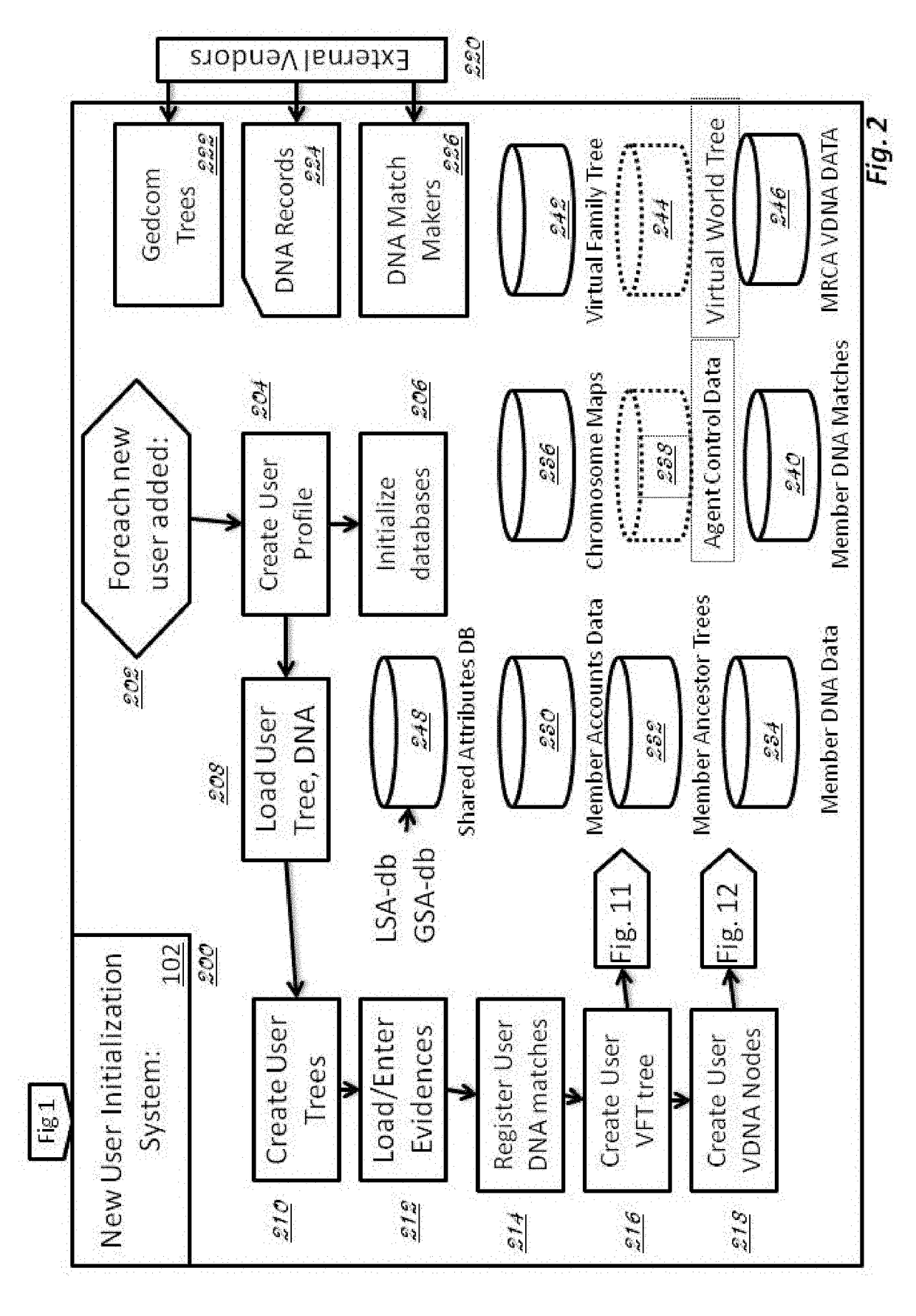Method and System for Discovering Ancestors using Genomic and Genealogic Data
a genealogical and genomic technology, applied in the field of genomic and genealogical data discovery methods and systems, can solve the problems of not systematically checking whether users' pedigrees are correct, the tendency to make inferences erroneously, and the inability of the user to use the tool, so as to facilitate the top-down strategy, reduce the number of surnames, and reduce the tendency to travel
- Summary
- Abstract
- Description
- Claims
- Application Information
AI Technical Summary
Benefits of technology
Problems solved by technology
Method used
Image
Examples
Embodiment Construction
[0171]The following description of the system and methods are presented in a manner to enable one of ordinary skill in the art to make and use the invention and is provided in the context of a patent application and its requirements. Various modifications to the exemplary embodiments and the generic principles and features described herein will be readily apparent. The exemplary embodiments are mainly described in terms of particular methods and systems provided in particular implementations. However, the methods and systems will operate effectively in other implementations. Phrases such as “exemplary embodiment”, “one embodiment” and “another embodiment” may refer to the same or different embodiments. The embodiments will be described with respect to systems and / or devices having certain components. However, the systems and / or devices may include more or less components than those shown, and variations in the arrangement and type of the components may be made without departing from...
PUM
 Login to View More
Login to View More Abstract
Description
Claims
Application Information
 Login to View More
Login to View More - R&D
- Intellectual Property
- Life Sciences
- Materials
- Tech Scout
- Unparalleled Data Quality
- Higher Quality Content
- 60% Fewer Hallucinations
Browse by: Latest US Patents, China's latest patents, Technical Efficacy Thesaurus, Application Domain, Technology Topic, Popular Technical Reports.
© 2025 PatSnap. All rights reserved.Legal|Privacy policy|Modern Slavery Act Transparency Statement|Sitemap|About US| Contact US: help@patsnap.com



